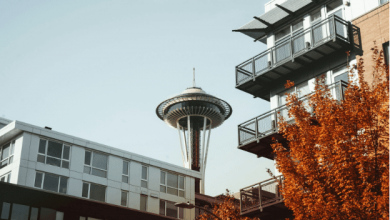How Do Retail Display Solutions Drive In-Store Sales?

In India’s dynamic retail landscape, where consumer preferences are rapidly evolving, retailers face the challenge of capturing attention amidst a plethora of choices. Traditional methods of product placement often fall short in influencing purchasing decisions. This is where retail display solutions come into play, offering innovative ways to engage customers, enhance brand visibility, and ultimately drive sales.
This means retailers must do more than just offer products—they need to create engaging experiences that capture attention, communicate value, and drive purchasing decisions.
One of the most effective tools for achieving this is retail display solutions. From endcaps and shelf displays to interactive kiosks and digital signage, these solutions are designed to influence shopper behaviour, highlight key products, and ultimately increase sales. But how exactly do they work, and why have they become a cornerstone of modern retail strategy?
This article explores the impact of retail display solutions, the types available, best practices for implementation, and measurable benefits for retailers.
The Role of Retail Display Solutions in the Indian Market
Vijay Sales launched its Diwali Celebration Sale, offering discounts of up to 60% on a broad range of products, including electronics and Apple devices. The festive promotion was complemented by well-designed in-store displays that highlighted these offers, drawing significant foot traffic and boosting sales during the Diwali season.
Retail display solutions like these encompass various strategies and tools designed to showcase products effectively, guide consumer behaviour, and enhance the shopping experience. In India, where visual appeal and cultural relevance play pivotal roles, these solutions are instrumental in:
- Attracting Foot Traffic: Eye-catching displays draw customers into stores, increasing footfall.
- Enhancing Brand Identity: Well-designed displays reinforce brand messaging and values.
- Influencing Purchase Decisions: Strategic placement and presentation can sway consumer choices.
- Maximising Space Utilisation: Efficient displays make optimal use of available retail space.
By addressing these aspects, retail display solutions help retailers create a compelling in-store experience that resonates with Indian consumers.
Types of Retail Display Solutions in India
India’s diverse retail environment demands a variety of display solutions tailored to different consumer segments and product categories. Some prominent types include:
-
Traditional Shelf Displays
These are the most common in-store displays, where products are arranged on shelves for easy access. In India, organising products by category, brand, or usage can enhance shopper convenience and encourage purchases.
-
Endcap Displays
Positioned at the end of aisles, endcap displays are highly visible and effective for promoting special offers or new arrivals. In Indian supermarkets and hypermarkets, these displays often feature festive discounts or seasonal products.
-
Point-of-Purchase (POP) Displays
Located near checkout counters, POP displays capitalise on impulse buying tendencies. In India, these displays often feature small, affordable items like snacks, cosmetics, or accessories, tempting customers to make last-minute additions to their purchases.
-
Digital Signage
With the rise of technology, digital displays are becoming prevalent in Indian retail stores. These screens showcase dynamic content, such as promotions, product information, or advertisements, engaging customers and providing real-time updates.
-
Interactive Displays
Interactive kiosks or touchscreens allow customers to explore product details, check availability, or even place orders. In India, such displays are gaining popularity in electronics and fashion retail sectors, offering a personalised shopping experience.
Samsung India experienced a significant surge in sales during the Navratri and Dussehra festivals, with a 40% increase in premium smartphone purchases. This boost was attributed to effective in-store displays, attractive festive offers, and reductions in GST rates on key electronics. The strategic use of retail display solutions played a crucial role in attracting customers and enhancing product visibility, leading to higher sales.
Impact of Retail Display Solutions on Consumer Behaviour
Retail display solutions significantly influence consumer behaviour, especially in the Indian context, where cultural nuances and shopping habits vary across regions. Key impacts include:
- Increased Engagement: Attractive displays capture attention and encourage customers to spend more time in-store.
- Enhanced Perceived Value: Well-presented products are perceived as higher quality, justifying premium pricing.
- Encouraged Impulse Purchases: Strategic placement of products can lead to unplanned buying decisions.
- Improved Brand Recall: Consistent and creative displays reinforce brand identity, aiding in customer retention.
Understanding these behavioural triggers allows retailers to design displays that resonate with Indian consumers, fostering loyalty and repeat business.
Best Practices for Implementing Retail Display Solutions in India
To maximise the effectiveness of retail display solutions, retailers should consider the following best practices:
- Cultural Relevance: In a multicultural country like India, incorporating regional themes, festivals, and local languages into displays can enhance relatability and appeal to diverse customer bases.
- Seasonal Adaptation: Aligning displays with Indian festivals and seasons, such as Diwali, Eid, or summer sales, can drive footfall and sales. For instance, festive-themed displays featuring traditional sweets or attire can attract customers during peak seasons.
- Strategic Placement: Positioning displays at high-traffic areas, such as store entrances or near checkout counters, ensures maximum visibility and accessibility.
- Clear Signage and Messaging: Using concise and clear signage, preferably in local languages, helps customers quickly understand promotions or product features, facilitating informed purchasing decisions.
- Regular Updates: Refreshing displays regularly with new products, offers, or themes keeps the store environment dynamic and engaging, encouraging repeat visits.
Measuring the Effectiveness of Retail Display Solutions
Retailers can assess the impact of their display solutions through various metrics:
- Sales Uplift: Monitoring sales before and after implementing new displays can indicate their effectiveness.
- Footfall Analysis: Tracking the number of customers entering the store can help gauge the attractiveness of displays.
- Customer Feedback: Direct feedback through surveys or social media can provide insights into customer perceptions and preferences.
- Inventory Turnover: Observing the rate at which products are sold can reflect the appeal of displayed items.
By analysing these metrics, retailers can refine their display strategies to meet customer expectations and business objectives better.
Conclusion
In the competitive Indian retail market, where consumer attention is fleeting and choices are abundant, retail display solutions play a crucial role in influencing purchasing decisions. By understanding consumer behaviour, implementing culturally relevant and strategically placed displays, and continuously measuring their effectiveness, retailers can create compelling in-store experiences that drive sales and foster brand loyalty.
Investing in innovative and thoughtful retail display solutions is not merely an aesthetic choice but a strategic imperative for retailers aiming to thrive in India’s vibrant retail landscape.

Source: How Do Retail Display Solutions Drive In-Store Sales?




